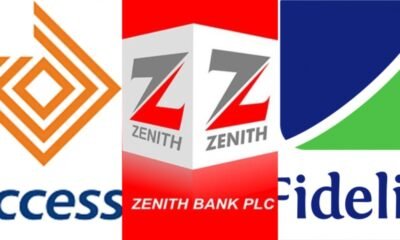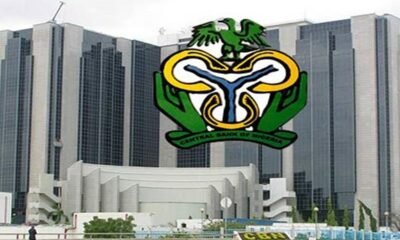Business
How UBA Leads Banking Sector in CAR, Liquidity Ratio

By Tolulope Oke
United Bank for Africa (UBA) leads Tier-1 and Tier-2 banks in Liquidity Ratio (LR) and Capital Adequacy Ratio (CAR), allowing it to sustain a stable and robust financial system despite the intensifying macroeconomic headwinds.
n particular, UBA reported 63.70% LR in its half year (H1) that concluded on June 30, 2022, up from the 47.60% reported in the 2021 fiscal year, while its CAR grew to 25.10% in H1 2022 from 24.90% in the previous fiscal year, ThisDay reported.
LR is used to measure a company’s capacity to pay off its short-term financial obligations with its current assets, while CAR is used to measure how much capital a bank has available, which is reported as a percentage of a bank’s risk-weighted credit exposures.
The CAR and the LR in the banking sector remained above prudential limits at 14.1 and 42.6 per cent, respectively in June 2022, according to the Central Bank of Nigeria (CBN).
The Central Bank of Nigeria (CBN) required all banks to maintain LR of 30 per, while other banking groups with international authorisation and those that have been categorise as being Domestic Systemically Important Banks (D-SIBs) to maintain a minimum CAR of 15 per cent, while a minimum CAR of 10 per cent will be applicable to all other banks.
The Basel III standard is a voluntary global regulatory framework that addresses bank capital adequacy, stress testing, and market liquidity risk.
According to the CBN, the goal of the guidelines was to specify the minimum Liquidity Coverage Ratio (LCR) standards for reporting companies in the banking system.
Other Tier-1 banks that had LR that outperformed the SIBs requirements were: Zenith bank that reported a decline in LR to 60.50 per cent in H1 2022 from 71.20 per cent in 2021 FY, while Access Holdings announced 53.60 per cent LR in H1 2022 from 50.70 per cent in 2021.
In addition, GTCO’s LR closed at 38.85 per cent in H1 2022 from 38.26 per cent and well above the regulatory minimum requirement of 30 per cent as Fidelity Bank reported 47 per cent LR in H1 2022 from 40.40 per cent in 2021 FY.
- READ ALSO: 2023: How Obidients Show Strength In Lagos, Osun, Edo, Delta, Others
- READ ALSO: ‘How N3.7m Was Transferred From My UBA Account Without My Knowledge’ – Woman Narrates
“Despite the pressure from intense competition and need to cover for regulatory debits, the Group maintained average liquidity ratio of 39.44per cent during the Period under review, ”GTCO explained in a presentation to investors/analysts.
In terms of minimum CAR, the trend of individual CAR of banks listed on the Nigerian Exchange Limited has been a mixed bag in the period under review.
Other considered banks with CAR above the regulatory requirement are: Zenith Bank, GTCO, Access Holdings, FirstBank (Nigeria), Fidelity Bank, Union Bank of Nigeria, FCMB group, Stanbic IBTC Holdings, Sterling bank and Wema bank.
Coming close to UBA was Access Holdings with 22.40 per cent CAR in H1 2022 from 24.50 per cent, while GTCO grew its CAR to 22.02 per cent in H1 2022 from 23.83 per cent reported in 2021FY.
While Firstbank (Nigeria) reported a decline in CAR to 16% as of June 30, 20212 from 17.40% in 2021FY, Zenith Bank’s CAR closed unchanged at 21%.
Union Bank of Nigeria and Stanbic IBTC lead the other banks sector with CARs ranging from 19.80% to 19.70%, while Fidelity Bank ended the first quarter of 2022 with a CAR of almost 16%.



























